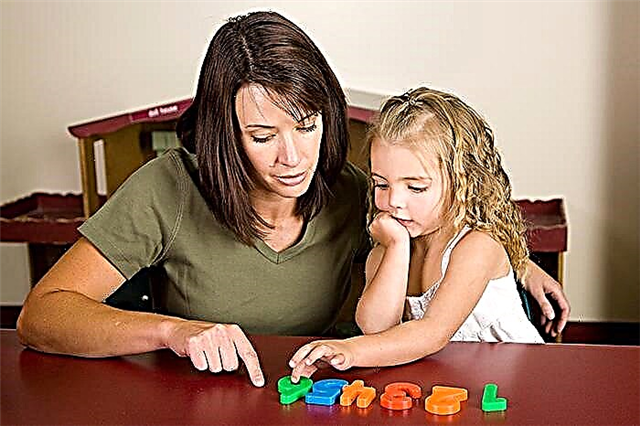With each new month, the baby not only grows, but also acquires certain skills. Thanks to them, he will be able to successfully interact with the world around him and discover it for himself from new sides.

Correct sitting position
Modern pediatricians have identified a number of skills that a child must independently master by a certain age period. If it so happens that he is experiencing difficulties with something or is not at all capable of any action, it is likely that it makes sense for parents to turn to specialists.
In the first months, the baby is mainly in the arena and the crib. Usually he lies all the time, tries to roll over, eventually begins to walk. On a walk he is put in a stroller.
Closer to six months, the child becomes interested in knowing his body and abilities. He tries to grab, hold objects, twitch his legs. By the beginning of the seventh month, as a rule, the first attempts to sit down and even crawl appear. However, it happens that the child is not sitting at 9 months.
How many months does the child sit down
The children's nervous system develops in waves, periods of rapid growth are called "leaps in development." Therefore, parents often observe global changes every day. If at six months a child tries to roll from his stomach to his back, then at nine he can sit down himself from any position. Sitting with a straight back for a long time is no longer difficult for a child.

The child learned to sit
Important! If there is any doubt that the child is developmentally delayed and any skills are not observed, this is not always a pathology.
Often, the long development of one skill is compensated by the rapid, if not simultaneous, development of another. In no case should you rush the baby and force him to sit down, it is not worth holding in this position. Otherwise, besides the fact that he will shout and freak out, nothing will come of it.
Also in the ninth month, he acquires the first walking skills: he kneels, tries to crawl, get up and reach for the support.
It should be understood that everything is relative. According to pediatrician Yevgeny Komarovsky, a mother's worst idea is to teach her child to sit down. The best thing to do is to give him freedom to learn about the world and not help him in his first steps and sitting. Each baby is unique. If, after consulting a doctor, no prescriptions were made, then the child is completely healthy and will soon sit down.
Why doesn't the child sit and crawl
Usually, before sitting down, the baby learns to crawl.

Toddler crawling is a fun pastime
There are some warning signs why a child at 9 months does not sit down and crawl:
- At 7-10 months, the child does not try to sit down, has poor balance,
- At 9 months, he cannot take and hold the object himself,
- There is a deficiency in body weight,
- Hypertonicity of the baby's muscles,
- Bulging eyes or squint
- Child's excessive anxiety
- Long fontanelle non-growth.
If you have any of them, you should contact a specialist.
Note! You need to closely monitor the baby: how he moves, how quickly he gets tired, what makes the main period of time awake. Find his "weak points", take them into service and start training, massage, gymnastics.
Signs of pathology
Why the child does not sit at 9 months old and whether because of pathology, only specialists can say. Children's doctors designate the following ones:
- Intrauterine fetal development was delayed during pregnancy,
- The presence of fetal hypoxia at the time of pregnancy,
- Mother's anemia in the process of carrying a child,
- Intrauterine infections
- The presence of congenital malformations
- Difficult labor, emergency caesarean section,
- The presence of birth injuries,
- Low Apgar scores,
- Premature or post-term baby
- Premature or rapid labor
- Excess or lack of amniotic fluid,
- Rickets in a child
- The diagnosis is muscle tissue dystrophy in a child.
How to tell if a child is ready to sit
Some children do not crawl at all, they immediately start to get up and try to walk. Others begin to crawl and do it in a peculiar way. Komarovsky notes the following crawling methods:
- On their bellies,
- On knees.
He also says that the crawling phase is very important for the baby's future back health. In addition, crawling, the toddler begins to get tired and tries to sit down on the side. This is the first sign that he may soon sit down on his own. The child quickly hones his skills and within a short time already sits down with his back straight.

The child sits down while crawling
You should not immediately sound the alarm and ask questions everywhere why a child at 9 months does not sit down by himself. It is likely that the baby was born restless, he likes to crawl around the apartment. Maybe he is the owner of a balanced character, so he is able to stay in one position for hours without feeling discomfort.
How to teach a child to sit on their own
All babies are incredibly curious about anything. Motivation is also important in learning to sit on your own. It is worthwhile to interest the child with a bright object that he wants to reach. Of course, at first he may start to be capricious, but with a consistent approach from his parents, he will soon want not only to reach from a prone position, but also try to roll over and sit down. You can also hang any rattles on the baby's bed that the child can access, either by standing on all fours or sitting.
Exercises to help your child learn to sit
There are a number of exercises that can help your toddler become more confident in sitting skills. They should be used when there is a clear confidence that the baby is ready to sit down on his own.

Exercise for successfully developing a child's sitting skill
Exercises:
- Gradually deprive the baby of back support, for example, remove the pillow, sit away from the sofa.
- Be sure to start physical exercises no earlier than an hour after eating. The child must be full and ready for the load. Clothes should not be constrained.
- Warm up: the baby himself rolls over from back to stomach.
- Put on your stomach, stand at the head of the child. Put thumbs in your palms and try to lift the baby up and smoothly down.
- Sit on your knees using your palms to support the child. Try to hold only with your hands on the sides, then the child himself will strive to hold his back.
- A more difficult exercise is to put on your back, give your thumbs to the baby's palms and try to slowly raise him. Thus, the skill of getting up from a prone position will be fixed.
- Fitball is very useful in training. It helps to simultaneously strengthen the muscles and relax the body.
- If there are signs of fatigue, you should put the baby on the back, let him relax and rest.
Additional Information. Girls should be taught to sit later than boys. This is due to the physiology of the female body. Too early sitting down is dangerous by the formation of a bend of the cervix.
In any business, it is important to be a calm parent and remember that the baby feels everything. For complacency, you can and even need to contact a neurologist, who, if necessary, will prescribe treatment, and believe that everything is going in the right direction.



